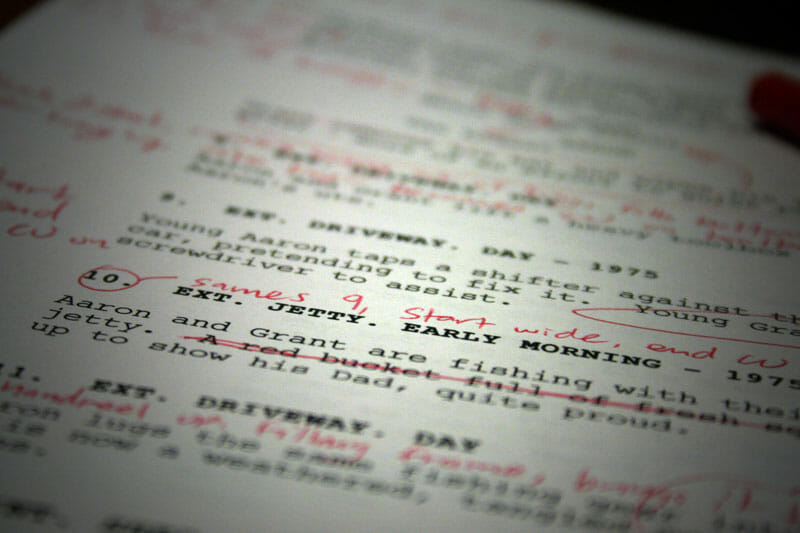By Staff · December 11, 2017

By: Matt van Onselen
Ah, rewrites. You’ve sweated bullets every day for months. You’ve had to dig deep into your soul on multiple occasions to move forward one tiny step. You’ve second-guessed yourself so many times you can’t remember what your original opinions were. You’ve sat at home, in coffee spots, libraries and that special writing spot and you’ve churned out pages, day after day. And what do you have to show for it? A first draft.
Writing can be a cruel mistress. The first draft is so far from the finished product it hurts. That’s when the rewriting process kicks in. But how does one go about handling all those rewrites? Do you just start hacking away at the dialogue? Do you delete all the boring bits and fill them in immediately? Here are some tips gleaned from UCLA screenwriting instructor Jim Strain, one of the writers of the original Jumanji movie:
We’re normally glued to our screens, but something changes when we read a physical script. Go through it in one sitting, just like a reader would. Make extensive notes about what works, what doesn’t, what sticks out, and so on.
Ask two or three trusted readers to go through the script and provide notes. When you receive the feedback, it’s important not to assume that the remarks are right or wrong. If you receive similar notes from all your readers, that usually indicates that there is an issue.
Remember, you can’t make someone love your script. Also, remember that you’re not obliged to take notes from people who don’t like your script.
You’re going to want to come up with an instant fix to all the problems identified. Don’t rush into these fixes. Instead, try to keep your eye on discovering the root problems that underlie the superficial issues.
These can include: general, structure, plot, scenes and character. You’ll then have a handful of script elements to choose from as you move into the next phase.
 Some things Jim suggests you ask about your note categories are:
Some things Jim suggests you ask about your note categories are:
What is the story about? What was the original logline, and how applicable is it to your current draft? Be aware of your weaknesses – do you struggle with Dialogue? Description? Action?
Keep your eye on continuity throughout. Ask yourself if there are enough obstacles for the characters to overcome. Is the structure clear, or muddled?
Is it believable? Does it drift in the second act? Is it confusing? If so, where exactly does the confusion start? Is it too complex, too predictable? Does it meet genre expectations?
Give each scene a grade: A, B or C. Ask yourself how you could move it to a better grade. Which scenes are mere placeholders? Can you define the purpose of every single scene? Are any scenes redundant? What would happen if you cut a scene altogether?
Is the protagonist active? Are the “wants” and “needs” clear? Do they have clear arcs? If the antagonist told the story, how would it be told? Are all the relationships strong? Have you paid enough attention to minor characters? What is each character afraid of?
Now you’re ready for your rewrite! But don’t be overeager; you can’t fix everything at once. You should determine the goal of each rewrite. Make it extremely focused. Consider the first rewrite “Round One,” and have it deal with, say, one character, or one specific plot point. Then you can systematically go through each category. Before you know it, you’ll be well on your way to the end of Draft Two. Then comes Draft Three. And Four. And… you get the picture.
For all the latest from The Script Lab, be sure to follow us on Twitter, Facebook, and Instagram.